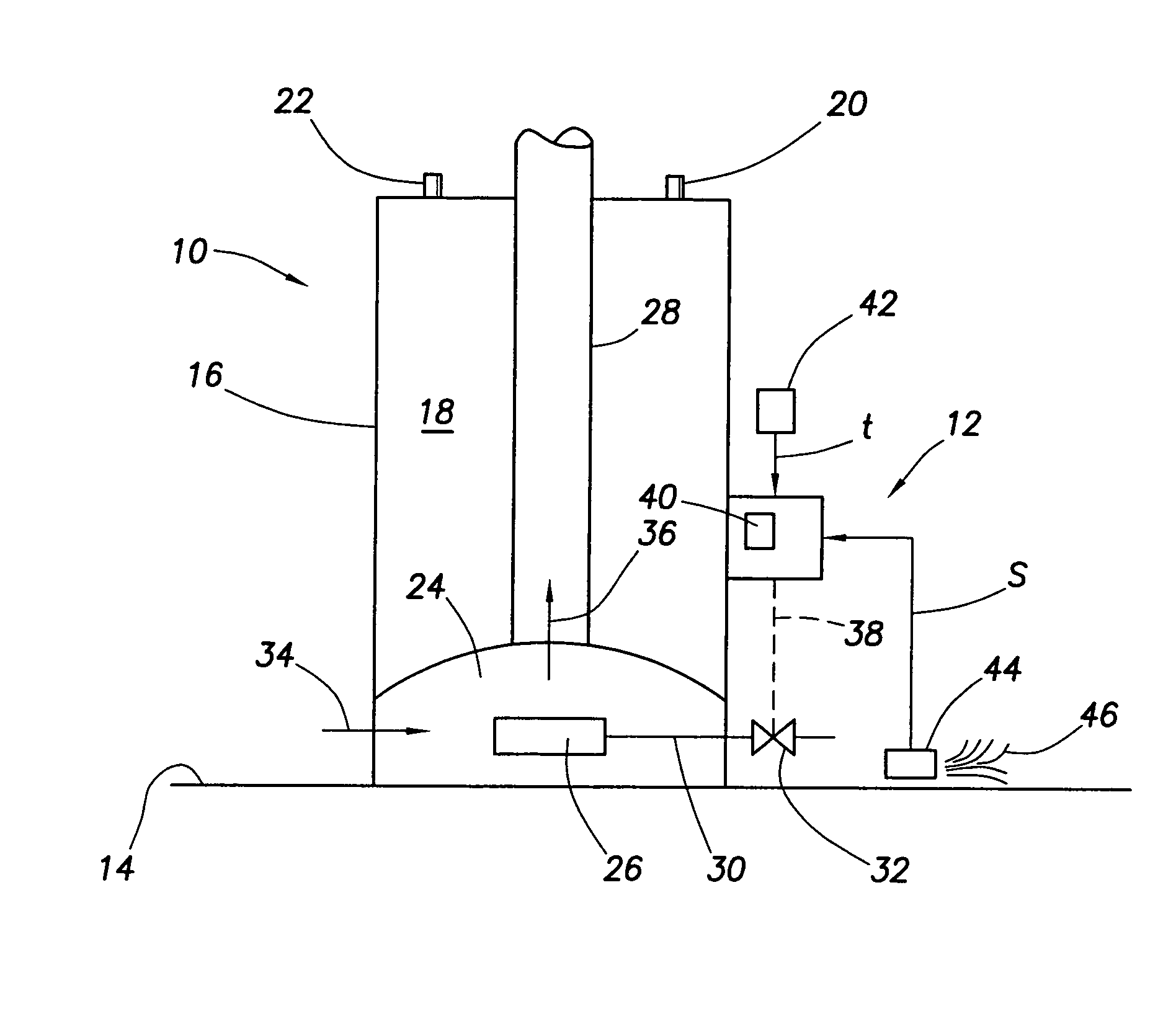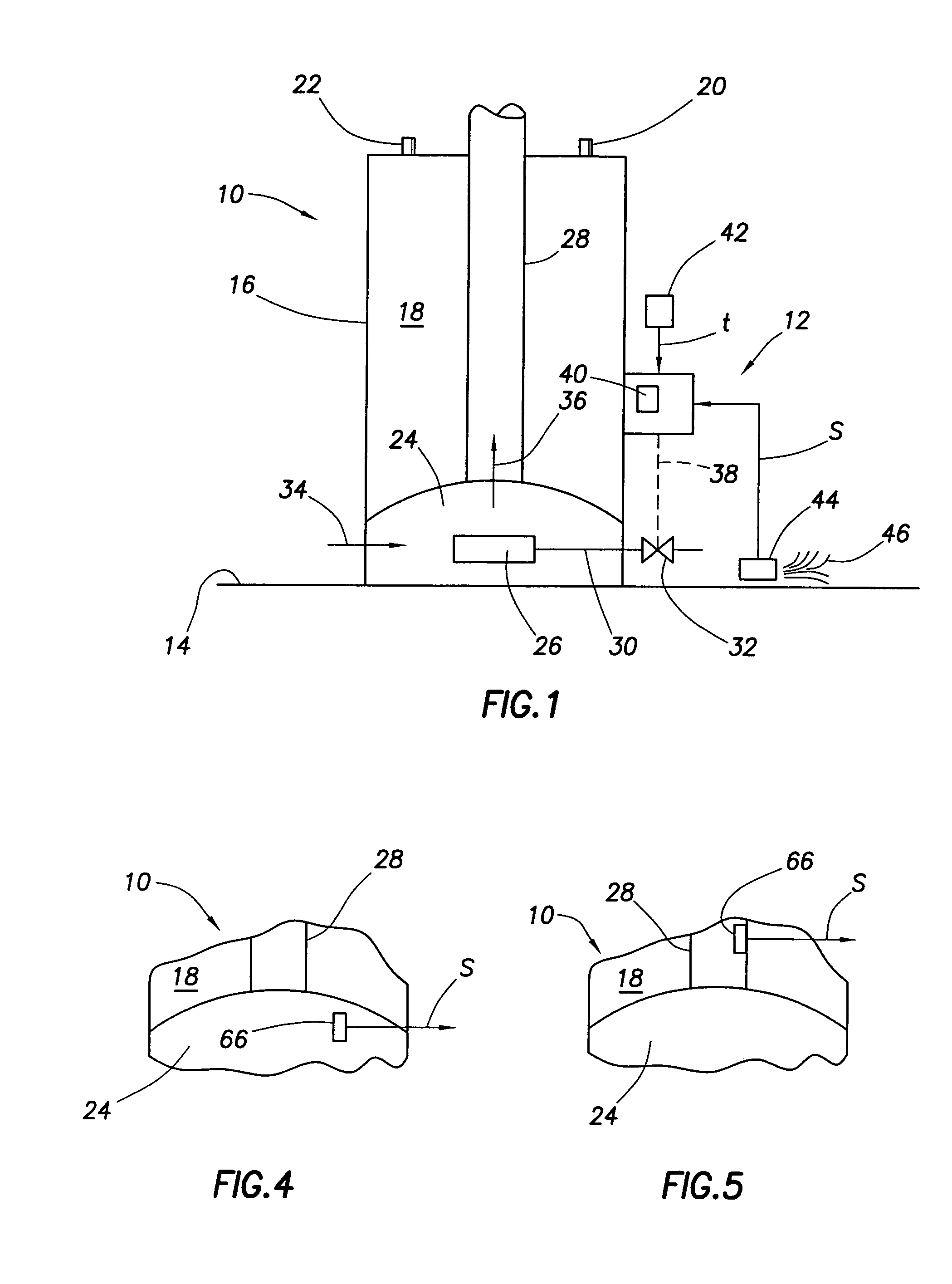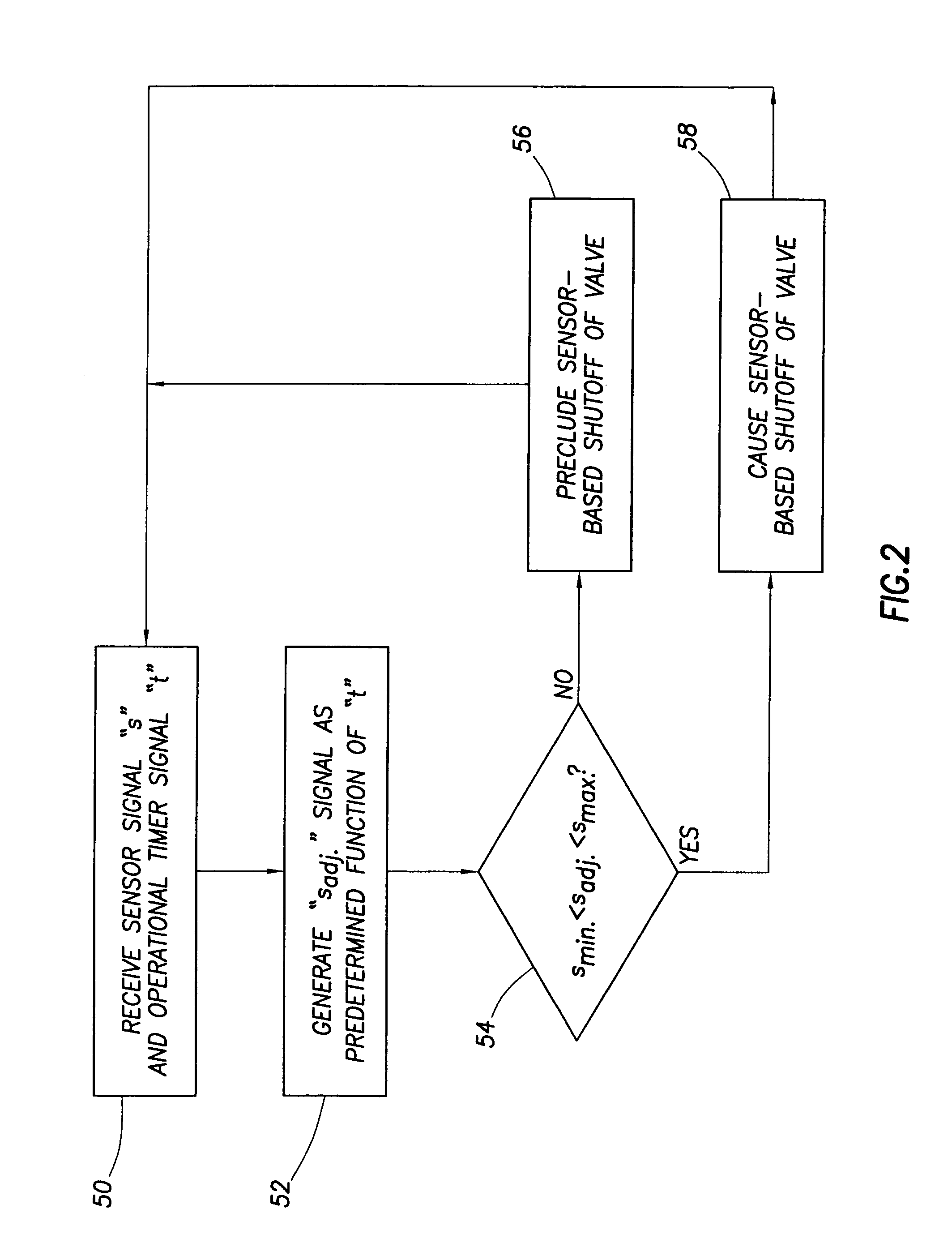Control techniques for shut-off sensors in fuel-fired heating appliances
a technology for shutting-off sensors and heating appliances, which is applied in the direction of fire alarms, combustion failure safes, instruments, etc., can solve the problems of sensor-based combustion shutdown of controlled appliances, insatiable standard flammable vapor sensor output signal magnitude range, and weakening of sensing output signal for a given concentration of sensed flammable vapor, etc., to achieve the effect of improving the accuracy of the combustion shut-off system
- Summary
- Abstract
- Description
- Claims
- Application Information
AI Technical Summary
Benefits of technology
Problems solved by technology
Method used
Image
Examples
first embodiment
[0025]As will now be described in conjunction with the schematic flow chart of FIG. 2, in a first embodiment thereof the system 12 uniquely utilizes the signals “t” and “s” to preclude combustion within the combustion chamber 24 when the concentration of the flammable vapor 46 adjacent the sensor 44 is within a predetermined range. Importantly, according to a key aspect of the present invention, the combustion shut-off accuracy of the sensor 44 (i.e., its preclusion of appliance combustion only when the sensed flammable vapor concentration is in the preset range thereof) is substantially maintained during its entire operational life despite the unavoidable progressive lessening (degradation) of its resistance output signal “s” for a given concentration of detected flammable vapor 46 due to “aging” of the sensor caused simply by the passage of time.
[0026]Turning now to FIG. 2, in the initial step 50 of the combustion shut-off control technique provided by the system 12, the microproc...
second embodiment
[0030]The sensor-based combustion shut-off control technique of the system 12 is schematically depicted in the flow chart of FIG. 3. In this embodiment of the system 12, the initial magnitudes of smin. (within the range of from approximately 6 kΩ to approximately 10 kΩ, preferably about 8 kΩ), and smax. (within the range of from approximately 90 kΩ to approximately 110 kΩ, preferably about 100 kΩ) are pre-programmed into the microprocessor 40. In the initial step 60 of the alternate FIG. 3 combustion shut-off control technique provided by the system 12, the microprocessor 40 receives the sensor resistance output signal “s” and the operational timer output signal “t”. In the next step 62, the microprocessor 40 adjusts the sensor valve control range smin-smax. in accordance with a predetermined relationship between “t” and the sensor resistance output signals smin. and smax. (i.e., the known relationship between the cumulative installed life Of the flammable vapor sensor 44 and its ag...
PUM
 Login to View More
Login to View More Abstract
Description
Claims
Application Information
 Login to View More
Login to View More - R&D
- Intellectual Property
- Life Sciences
- Materials
- Tech Scout
- Unparalleled Data Quality
- Higher Quality Content
- 60% Fewer Hallucinations
Browse by: Latest US Patents, China's latest patents, Technical Efficacy Thesaurus, Application Domain, Technology Topic, Popular Technical Reports.
© 2025 PatSnap. All rights reserved.Legal|Privacy policy|Modern Slavery Act Transparency Statement|Sitemap|About US| Contact US: help@patsnap.com



